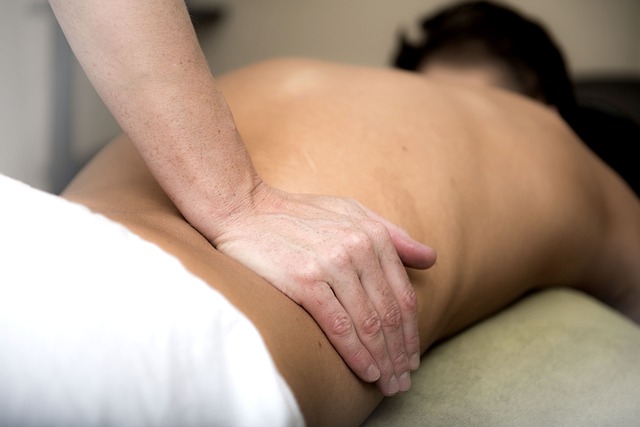What is sciatica? The symptoms, and causes:
Sciatica is a condition characterized by pain, numbness, tingling, or weakness that radiates along the sciatic nerve, which runs from the lower back through the buttocks and down the back of each leg.
Symptoms of Sciatica:
- Lower back pain: Dull, aching pain in the lower back, which may radiate down the buttocks and legs.
- Leg pain: Sharp, shooting pain that radiates down the back of one or both legs, sometimes extending below the knee.
- Numbness or tingling: A “pins and needles” sensation or numbness in the affected leg, foot, or toes.
- Weakness: Difficulty moving the affected leg or foot, or experiencing weakness or difficulty standing on the affected side.
- Pain when sitting or standing for long periods.
- Pain that worsens with coughing, sneezing, or straining.
What are the possible causes of sciatica:
- Herniated or bulging disc: When the soft, inner portion of a spinal disc protrudes and compresses the sciatic nerve.
- Degenerative disc disease: Age-related wear and tear on the spinal discs, leading to disc herniation or narrowing of the spinal canal.
- Spinal stenosis: Narrowing of the spinal canal, which can put pressure on the sciatic nerve.
- Piriformis syndrome: Tightness or spasm in the piriformis muscle (located in the buttocks), which can irritate the sciatic nerve.
- Bone spurs: Bony growths that can form on the vertebrae and compress the sciatic nerve.
- Pregnancy: The weight and position of the fetus can put pressure on the sciatic nerve.
- Overweight/Obesity: especially around the abdominal area, puts extra strain and pressure on the spine and discs in the lower back. This added pressure can cause the discs to bulge or herniate, which may then compress and irritate the sciatic nerve roots.
- Injury or trauma: A herniated disc or other injury to the spine or pelvis can compress the sciatic nerve.
- Tumors: Although rare, tumors on the spine or pelvis can put pressure on the sciatic nerve.

What are the benefits of massage therapy for sciatica:
- Reducing Inflammation
- Massage therapy can help alleviate this inflammation in several ways. Specific techniques, such as effleurage (long, gliding strokes) and petrissage (kneading), can reduce swelling and pressure on the sciatic nerve. Additionally, massage promotes better circulation and lymphatic drainage, which helps flush out inflammatory byproducts and reduce further irritation.
- Relieving Muscle Tension and Spasms
- Sciatic nerve pain is often accompanied by tightness and spasms in the muscles surrounding the lower back, gluteal region, and legs. A skilled Massage Therapist can employ various techniques to release this tension and improve flexibility and range of motion. Deep tissue massage, for instance, uses firm pressure to reach deeper layers of muscle and break up adhesions and knots. Trigger point therapy, a focused technique that applies pressure to specific points, can also help release muscle tension and alleviate referred pain.
- Promoting Relaxation and Pain Management
- Massage therapy can help promote relaxation and reduce the stress and anxiety associated with living with chronic pain. By promoting the release of endorphins, the body’s natural painkillers, massage can provide a drug-free way to manage sciatic nerve pain. The soothing touch and calming environment of a massage session can also help lower cortisol levels, further contributing to a sense of relaxation and well-being.
Massage techniques that helps for sciatica:
- Swedish massage
- Long, gliding strokes to improve circulation
- Kneading and friction to release muscle tension
- Deep tissue massage
- Firm pressure to reach deeper layers of muscle
- Trigger point therapy for focused release of knots
- Myofascial release
- Stretching and releasing the fascial system
- Improving mobility and reducing nerve compression
Our approach to sciatica management:
While massage therapy can be an effective complementary treatment for sciatica, it’s essential to work with a qualified and experienced Massage Therapist. At Pro Fusion Rehab, all of our Massage Therapists are fully licensed and with extended experience in treating various orthopedic conditions. They can tailor the techniques and pressure to your specific needs and ensure that the massage is safe and appropriate for your condition. Additionally, it’s crucial to consult with your healthcare provider before starting any new treatment, particularly if you have any underlying medical conditions or concerns.
Massage therapy can be a valuable addition to a comprehensive approach to managing sciatic nerve pain, which may also include physiotherapy, self-care techniques like stretching and heat/cold therapy, and addressing underlying causes such as poor posture or lifestyle factors. By reducing inflammation, relieving muscle tension, and promoting relaxation, massage can help you find relief and improve your overall quality of life.
References: 1. Field, T., Diego, M., & Hernandez-Reif, M. (2007). Massage therapy research. Developmental Review, 27(1), 75-89. https://doi.org/10.1016/j.dr.2005.12.002 2. Romanowski, M., McGrath, M., & Bagur, J. (2018). Massage therapy for the treatment of chronic sciatic nerve pain: a systematic review of the literature. Complementary Therapies in Clinical Practice, 32, 241-247. https://doi.org/10.1016/j.ctcp.2018.06.012 3. Sculco, A. D., Paup, D. C., Fernhall, B., & Sculco, M. J. (2001). Effects of aerobic exercise on low back pain patients in treatment. The Spine Journal, 1(2), 95-101. https://doi.org/10.1016/S1529-9430(01)00026-2
